Commonly known as Butterfly Weed or Milkweed, Asclepias is a genus of flowering plants that are native to North America. With over 100 species of Asclepias to choose from, there is a type of plant for almost any garden setting. It is a perennial plant that typically grows to about 2-4 feet tall, depending on the species. Asclepias tuberosa also serves as a vital resource for monarch butterflies, hence its common name “Butterfly Weed.”
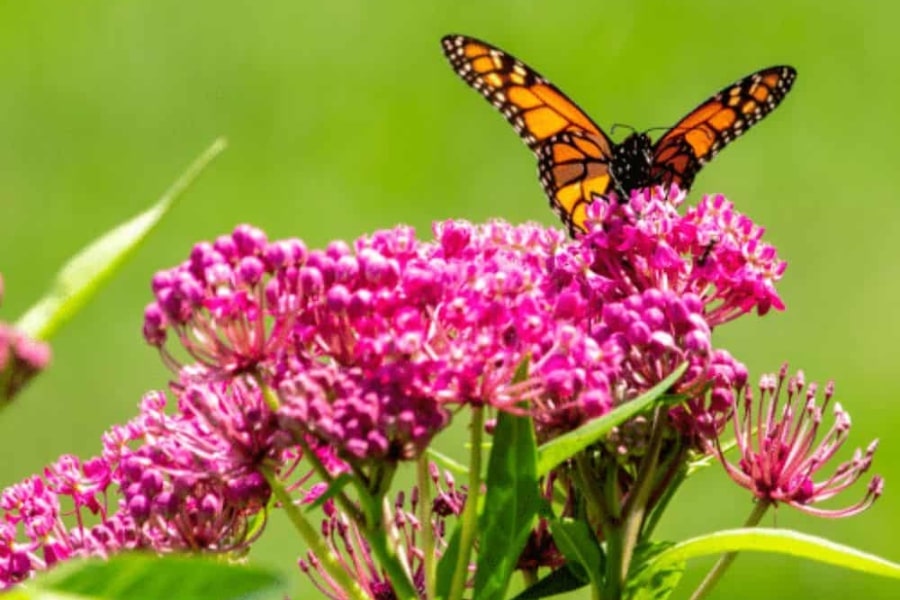
Our Selection of Asclepias
At Martin Garden Center, we grow 4″ containers of Asclepias Tuberosa (Butterfly Weed), and we also stock the same from our vendors. From time to time, we will bring in 6″ or 1-gal containers of Asclepias syriacus (Common Milkweed) from our vendors. Asclepias is not ready for sale until Summer – typically in late May or June. It thrives in the heat and does not grow when temperatures are below 60°F at night.
Growing and Caring for Asclepias
- Asclepias thrives in well-drained soil with good sunlight exposure, making it an excellent addition to butterfly gardens, meadows, or containers.
- Asclepias loves the heat. When temperatures are above 80F, Asclepias will grow well but will be slow to start in cooler temperatures.
- When planting Asclepias, it’s important to provide adequate spacing between plants to allow for healthy growth and airflow. Proper spacing not only prevents overcrowding but also reduces the risk of disease.
- Regular watering is essential during the initial establishment period, but once established, Asclepias is relatively drought-tolerant and prefers soil that dries out between waterings.
- Applying a layer of mulch around the plants helps retain soil moisture and regulate temperature fluctuations.
- Pruning and deadheading Asclepias can encourage prolonged blooming and maintain a neat appearance.
- Remove spent flowers to prevent self-seeding and redirect the plant’s energy toward new growth.
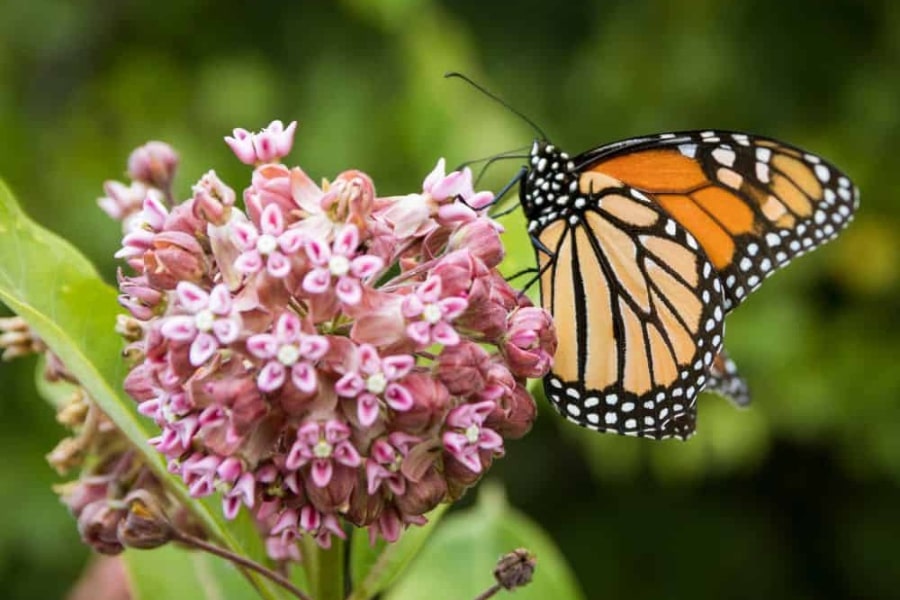
Preventing Pests
While Asclepias is generally low-maintenance, keep an eye out for signs of pests such as aphids which tend toward the Asclepias. If pest populations become problematic, use only non-chemical pest control methods. This is because the monarch caterpillar feeds on the Asclepias plant, so using chemicals to control aphids can kill the caterpillars. Instead of chemicals, use physical means, particularly blasts of water, to remove aphids from any Asclepias.
When monarch caterpillars are present, allow them to eat the Asclepias down to the ground. Don’t worry … the Asclepias, if established, will come back. And if it doesn’t, you’ve sacrificed a plant for an endangered species!!!
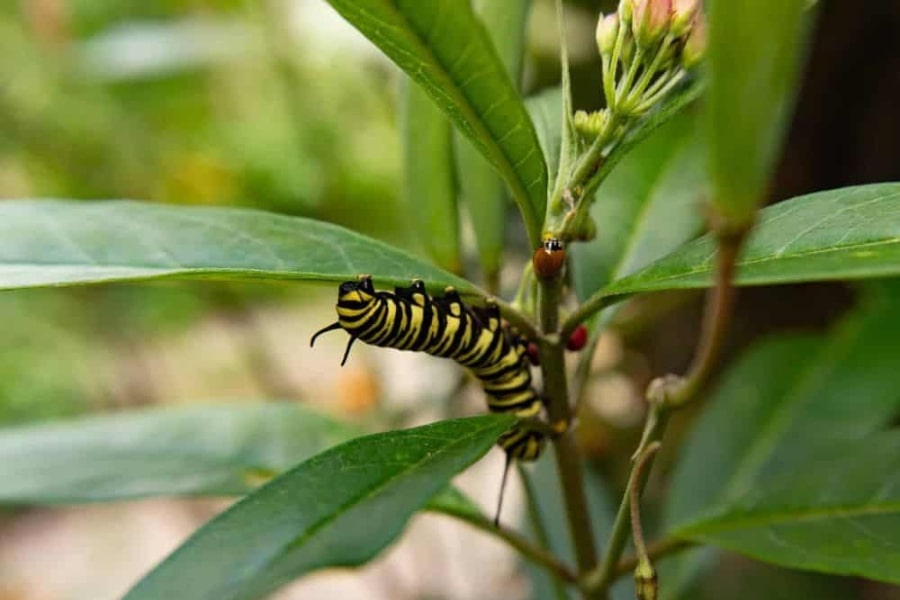
Leaves and Flowers
The leaves of Asclepias have a simple yet unique structure. Most species feature opposite leaves that vary in shape from narrow and lance-like to broad and ovate. What sets Asclepias leaves apart is the milky sap-filled veins that course through them. This sap contains toxic compounds known as cardenolides, which serve as a defense mechanism against herbivores, rendering the plant inedible to most animals. However, these leaves also provide essential sustenance for the caterpillars of Monarch butterflies.
Above the protective foliage, the flowers of Asclepias bloom in intricate and captivating clusters. Each flower has five petals reflexed like a crown, creating a distinctive umbrella-like shape. Within this structure, the flower’s reproductive organs are nestled. The crown-like arrangement acts as a landing platform for visiting pollinators, enabling them to access the abundant nectar stored in specialized structures called nectaries. The flowers’ intricate beauty, often colored in shades of pink, orange, or purple, is further enriched by the presence of five hood-like structures known as hoods, which protect the nectar from rain and offer a strategic landing pad for insects.
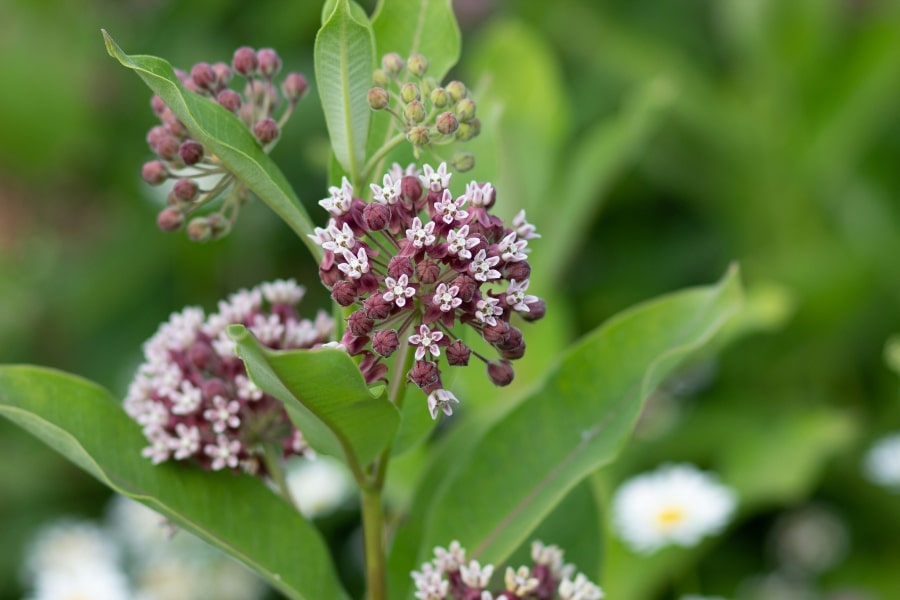
Uses in the Garden
Asclepias is a versatile and rewarding Perennial, especially for those looking to support pollinators in their garden. This hardy perennial thrives in full sun gardens, where its bright blooms draw in bees, butterflies, and other beneficial insects. Planting Asclepias alongside other nectar-rich flowers like Coneflowers, Black-eyed Susans, and Lantana can creates a dynamic, pollinator-friendly space that stays vibrant throughout the growing season.
For those interested in naturalizing their landscape, Asclepias can be a key player in prairie-style plantings and native gardens. It pairs beautifully with ornamental grasses, creating a striking contrast of textures while maintaining a natural, flowing aesthetic. Gardeners can also use it to fill in sunny, open spaces where other plants may struggle, as its deep taproot helps it withstand drought conditions. In addition to its beauty, planting Asclepias is an easy way to support declining monarch butterfly populations, as it serves as a critical host plant for their caterpillars.
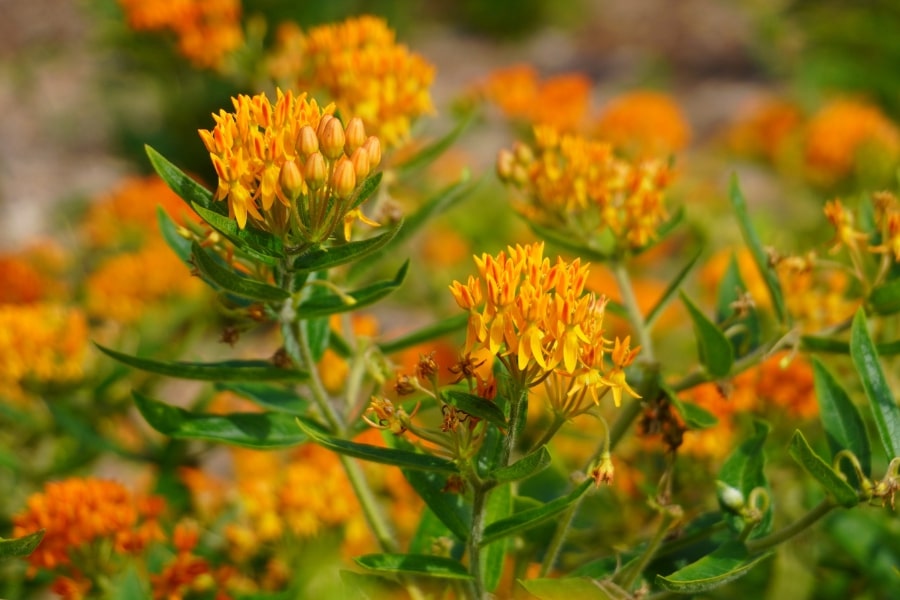
Frequently Asked Questions
When to Plant Asclepias Seeds?
Asclepias, commonly known as milkweed, can be planted from seeds in the spring or fall, depending on your local climate and growing conditions. Here are some general guidelines:
- Spring Planting: In regions with cold winters, you can start Asclepias seeds indoors 6-8 weeks before the last expected frost date. Transplant the seedlings outdoors after the danger of frost has passed. Direct seeding can also be done in the spring when the soil has warmed up and is workable. Sow the seeds directly into the garden bed and cover lightly with soil.
- Fall Planting: In mild climates, where winters are not severe, you can plant Asclepias seeds in the fall. This allows the seeds to undergo natural cold stratification, promoting better germination in the spring. Ensure the seeds are planted at the appropriate depth.
Is Butterfly Weed Deer Resistant?
Deer generally find the milky sap and the texture of Butterfly Weed to be unpalatable, making it less likely to be browsed by deer. However, it’s important to note that “deer-resistant” doesn’t guarantee that deer will never eat a particular plant.
Is Asclepias Poisonous to Dogs?
Asclepias contains toxins known as cardenolides. These substances can harm animals, including dogs if ingested in significant quantities. Ingesting Butterfly Weed can lead to symptoms of toxicity in dogs, such as vomiting, diarrhea, drooling, difficulty breathing, rapid heartbeat, and, in severe cases, more serious complications.
